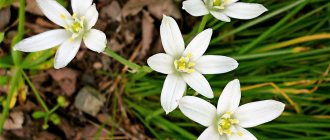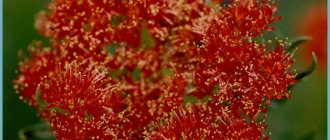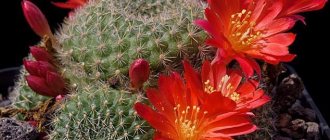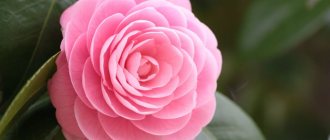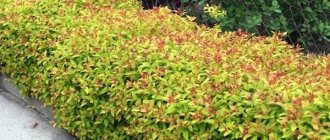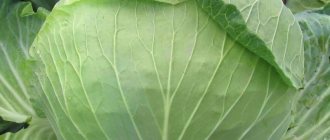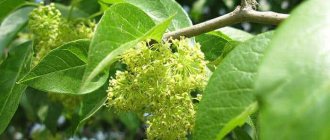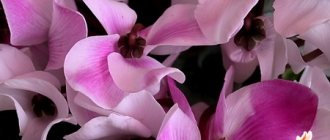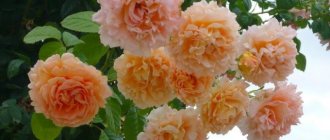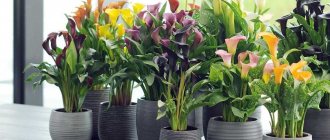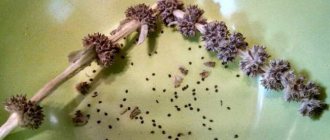Young: appearance and other characteristic features
Juvenile, known to botanists as Sempervivum, is one of the many genera included in the Crassulaceae family. In Europe, these plants are widespread. The first species was described in the middle of the 18th century by the famous Swedish systematizer Carl Linnaeus. Since then, the young plant has enjoyed steady popularity among landscape designers, decorating gardens and parks with its rosettes. Over time, they began to grow it at home.
The daughter rosettes of the young are arranged very tightly, forming one continuous carpet
It is impossible to calculate the exact number of species included in the genus. There are about 50 “natural” plants and many hybrids, natural and bred by breeders. Juveniles have the ability to cross, including interspecific.
The species diversity of juveniles is amazing
The scientific name rejuvenated is a combination of two Latin words: semper (“forever”, “forever”) and vivus (“alive”). That is, sempervivum literally means “ever-living.” The plant owes their special ease of reproduction to them. Old sockets are constantly being replaced by new ones.
There are also many unofficial nicknames - “stone rose” (for the shape of the rosettes), “rabbit cabbage” (for the thick fleshy leaves), “mother hen with chicks” (for the appearance of the mother and daughter rosettes), “tenacious” and several other names with with a similar meaning (for unpretentiousness and the ability to reproduce itself).
Juvenile is widely used in landscape design
The young ones also have another interesting nickname - “thunder grass” or “thunder grass”. In the Middle Ages, a superstition was widespread in Europe, according to which a young plant, dedicated to the thunder god Thor, could protect a home from a lightning strike. To do this, he needs to be planted on the roof. It was not only the common people who were subject to superstition. The corresponding decree was issued by Charlemagne. Over time, the rosettes grew so large that they completely covered the roof. This is reflected in the name of one of the varieties of the plant - roofing rejuvenation.
In the Middle Ages, the roofs of many houses looked something like this
Like all Crassulaceae, Juvenile is an evergreen perennial succulent. It stores moisture and nutrients in its fleshy stems and leaves. The leaves, densely arranged alternately or in a circle, are collected in rosettes, the diameter of which varies from 1–2 cm to 20–25 cm. The leaf blades are ovoid or lanceolate in shape, the tip can be rounded or sharp. The shoots are short, so the rosettes seem to lie on the ground.
The rosette of leaves of juveniles is small, but very dense
Flower growers value young plants for their stunning variety of shapes and shades. The leaves can be glossy or matte, covered with a “waxy” coating, smooth or pubescent. The color range includes all shades of green, reddish, lilac, pink, silver, brown.
Different types of juveniles look impressive in the composition
The buds of the young are collected in inflorescences in the form of a shield or panicle. The flowers look like double stars. They can be snow-white, yellowish, pale pink, scarlet or burgundy. The flower stalks rise above the rosette to a height of 15–20 cm. Even in normal times, the plant emits a pleasant aroma, which intensifies even more during flowering. Then the fruit ripens - a leaflet with many seeds.
Young blooms at home are quite rare.
After flowering, the rosette that has thrown out the peduncle dies, having managed to give life to many offspring before that. They are formed in the axils of the leaves on special “whiskers”. At home, buds rarely form, so 5–10 years is the normal lifespan for young ones. As a rule, flowering occurs at the end of June or July and lasts about a month.
In the Middle Ages, rejuvenation was widely used in folk medicine and cosmetology. Girls rubbed its juice on their cheeks to get a healthy glow and get rid of freckles. Wine tinctures were considered an effective antidote (it was even recommended to carry a socket with you to avoid snake and scorpion bites). It was also used to sharpen vision and hearing, fight inflammation, treat diseases of the stomach and intestines, and destroy warts.
This plant is often confused with another member of the Crassulaceae family - Echeveria. In contrast, juveniles are frost-resistant (can tolerate even slight negative temperatures). Its “offsprings” are formed on special “whiskers”, and not at the base of the rosette. The leaves of the young plant are thinner, softer and more graceful than those of echeveria, the rosettes are smaller in diameter. With a lack of light, echeveria can stretch out, forming something similar to a stem; this never happens with juveniles.
It is quite difficult for someone who is not an expert in the field of botany to distinguish Echeveria from Juvenile at first glance.
Video: what youth looks like
Rejuvenated, use in folk medicine
Traditional medicine actively uses rejuvenation for medicinal purposes:
- For migraines
- At elevated temperatures
- For treating wounds
- For the treatment of ulcers
- To eliminate women's pain
- For the treatment of hemorrhoids
- To eliminate freckles
- To eliminate warts
- For the treatment of eczema and psoriasis
- For the treatment of diathesis
- For the treatment of heart failure
Juvenile is used for:
- Preparation of decoctions
- Preparation of infusions and tinctures with alcohol
- Preparation of lotions and compresses
- Preparation of pastes and ointments
If there are no individual contraindications, the young is allowed to be consumed fresh. Only the leaves of the plant, which are somewhat reminiscent of broccoli in taste, are allowed to be eaten raw. In some cases, the leaves should be doused with boiling water and crushed for oral administration.
Preparation of medicines from young
Types grown at home
The vast majority of juvenile species have adapted to growing at home. There are also many breeding hybrids. The most difficult thing is to choose the most attractive plant and limit yourself to purchasing only a few specimens (the latter is almost impossible for a gardener).
The most popular varieties are:
- Roofing young (tectorum). The rosettes are shaped like balls flattened on top. Diameter - 18–20 cm. Leaves are pubescent, bronze-brown with a slight burgundy tint. It blooms at the end of summer, the process lasts about 1.5 months. Petals of different shades of purple with light green veins.
- Marble rejuvenated (marmoreum). The rosettes are almost flat, 7–10 cm in diameter. Young leaves are covered with short “pile”, which disappears as the plant matures. Green leaves are slightly red or brown. Sometimes this shade changes with the seasons, becoming darker in the summer. There is a thin pale green border along the edge.
- Queen Amalia was young (reginae-amaliae). Rosette with a diameter of 15 cm. Leaves are chocolate or brown in color. The flowers are pastel yellow, collected in a panicle.
- The young are offspring or shoot-bearing (soboliferum). The leaves are elongated, lanceolate. Before flowering, their tip turns red. The flowers are yellowish or lime green, collected in corymbs with a diameter of 6–8 cm.
- The Russian was rejuvenated (ruthenicum). Small rosettes with a diameter of 4–6 cm. The leaves are elongated, wedge-shaped. The flowers are pastel yellow. Inflorescences in the form of a shield with a diameter of 7–10 cm. The peduncle is pubescent.
- Cobweb juvenile (arachnoideum). The diameter of the rosette is no more than 2–3 cm. The leaves are elongated, lanceolate, the sharp tip is slightly bent inward. Color - pale green with a brick tint. Along the edge of the leaf plate there is an edge of long white “pile”. The flowers are dull red. Peduncle height up to 30 cm.
- The young were spherical (globiferum). The diameter of the rosette is 4–5 cm. The leaves are shaped like a shovel. The main shade is bright green, the tip is reddish. The flowers are yellow or greenish, the inflorescence looks like an umbrella.
- Mountain young (montanum). The leaves are densely pubescent, collected in rosettes up to 3 cm in diameter. The flowers are small, pinkish.
- Young young undersized or dwarf (pumelum). Prefers mountain climate. Distributed in the Caucasus and the Alps. A rosette with a diameter of 5–7 cm. The leaves are dark green with “cilia” along the edge. The flowers are lilac-burgundy.
“Natural” varieties of juveniles popular among flower growers in the photo
Roofing young - the most popular variety grown at home
Marbled juveniles can change leaf color depending on the time of year
Queen Amalia's young forms quite large rosettes
The tips of the leaves of the young offspring acquire a reddish tint before flowering
Young Russian is found mainly in the European part of Russia and the Caucasus
The cobwebby youngster owes its name to the long whitish hair running along the edge of the leaf.
Juvenile spherical blooms with small yellow or greenish flowers
The rosettes of the young mountain mountain are arranged very closely
Dwarf juveniles grow mainly in the mountains
Breeders are always trying to “correct” nature. Juveniles are an interesting material for experiments. Currently, there are many artificially bred hybrids.
Photo gallery: achievements of breeders
Young Pharaoh - rosette diameter up to 10 cm, rich green leaves, sharp tip, inky purple
Rejuvenating Princess - bright green leaves with a chocolate tint are arranged very densely, the rosettes resemble small balls Rejuvenating Montana - large rosettes, 20–25 cm in diameter, dark green leaves have a purple tint to them. Green King Rejuvenating is reminiscent of Pharaoh in the shape of the rosette, but the leaves are bright green
Juvenile Julia - rosette diameter is about 20 cm; a thin scarlet border appears on the marsh-colored leaves at the end of summer, disappearing by spring
Juvenile Red - small (5–7 cm in diameter) rosettes of leaves of almost pure red color, the green undertone is almost invisible
Reproduction Alpha - beet leaves with green tips, pale pink flowers; socket diameter up to 10 cm
Topaz young - almost burgundy leaves, bright scarlet flowers
Jubilee Jubilee - rosette diameter 18–20 cm, the bases of the pubescent leaves are pinkish, gradually this shade changes to light green
Young Falkonetti - olive-silver leaves, chocolate-colored tips; socket diameter up to 15 cm
Creating optimal conditions for the plant
Juveniles are widespread in Europe, including Russia. Therefore, the plant has no problems adapting to the conditions of modern apartments. Particular attention should be paid to lighting. With a lack of light, the flower noticeably loses its decorative value.
Table: how to create an optimal microclimate for juveniles
| Factor | Recommendations |
| Location | Window sill of an east or west window. The plant loves fresh air, so the room needs to be ventilated daily. Drafts do not harm the young. In summer, it is useful to move the pot to an open balcony, veranda, or garden. You can even temporarily plant the plant in open ground. |
| Lighting | The best option is bright but diffused light with shading from 11:00 to 15:00. In direct sunlight, the plant forms small rosettes, but the color of the leaves is very rich. In partial shade, the rosettes are large but “loose”, the leaves are faded. |
| Temperature | The only requirement of the plant is that the temperature must be positive. Indoor juveniles will die at 0ºC and below. It tolerates heat, including extreme heat, easily. In winter, it is advisable to provide a temperature of 10–12ºС. |
| Air humidity | The plant is very drought-resistant, so the standard air humidity for an apartment (45–50%) will suit it quite well. High humidity is even harmful - the bright color of the leaves can fade. Varieties with pubescent leaves (especially the young cobwebby one) do not like dampness very much, they cannot be sprayed even for sanitary purposes. Other types can be wiped with a damp sponge or soft cloth once every 2-3 weeks. |
The appearance of the plant will depend on where you place the pot with the young plant.
Plant propagation
Increasing the population of “quarry moths” on the site is possible in 3 ways - seeds, cuttings, children. Growing from seeds is the most painstaking and therefore unpopular type of propagation.
In its natural environment, in the garden, the plant reproduces well on its own without the help of a gardener. The mother rosette forms a baby, which then takes root near it, forming a beautiful “carpet” of young plants.
Propagation by cuttings occurs as follows: a leaf is separated from the mother bush, then the cutting is dried and planted in the soil. Over the course of a year, the seedling develops into a full-fledged plant.
How to transplant a flower correctly
Since the young plant differs in its growth rate and ease of formation of daughter rosettes, the plant is replanted when the diameter of the rosette coincides with the diameter of the pot. Usually one procedure every 2-3 years is sufficient. The best time to transplant is early or mid-spring. If the young have not yet outgrown the container, you can remove the top 1–2 cm of soil and add fresh substrate to the pot.
The root system of the plant is fibrous, superficial, and rather poorly developed. Therefore, there is no need for a large deep pot. On the contrary, in a container “for growth” the young develop more slowly, spending energy on “developing” the space. A pot that looks like a soup plate or bowl works best. With each replanting, its diameter is increased by 2–3 cm. Natural ceramics are preferred as materials - it allows air to pass through better, preventing the soil from souring.
A suitable pot for juveniles is similar to those in which bonsai are grown
The young were undemanding in terms of soil quality. Store-bought substrate is quite suitable for cacti and succulents. The soil should be neutral and not too nutritious, preferably sand-based. In too “greasy” soil the rosette will grow very large, but the color of the leaves will fade greatly and the plant will become unattractive.
- Leaf soil and coarse river sand (1:1). For every 3 liters of the finished mixture, add a glass of sifted wood ash and fine chips from old red bricks.
- Turf soil, powder clay, sand, universal soil for decorative foliage plants (1:1:1:2). If you are getting soil from your own garden, check its acidity level. Acidic soil is not suitable for young plants.
A useful additive is crushed chalk, powdered birch charcoal or wood shavings. The material will absorb excess moisture, preventing the development of rot.
Juveniles have no special requirements for soil quality; Regular soil is quite suitable for cacti and succulents
Even a novice gardener can cope with plant transplantation:
- Pour fine expanded clay, pebbles, and brick chips onto the bottom of the new container, filling about a third of the pot’s volume with drainage. On top is a layer of finished substrate 1–2 cm thick.
- Remove the young from the old pot. Shake the soil off the roots.
- Inspect the roots, cut off any rotten or dried ones. Sprinkle the sections with crushed activated carbon, chalk, and cinnamon. Let dry for 2-3 hours.
- Moderately moisten the substrate in the new pot. Place the young plant in it, straighten the roots so that they do not bend upward. The base of the socket must not be buried.
- Add soil, shake the pot lightly several times to distribute it evenly.
- Water the plant a little. Remove it for 5-7 days in partial shade. The next watering is only after this time.
Small rosettes of juveniles look impressive in florariums. You can create a composition from several types of succulent plants. Such a container takes up very little space, but looks very impressive.
- Wash the selected vessel thoroughly, scald with boiling water, and wipe the inside with alcohol.
- Place a 2–3 cm thick layer of sand, brick chips or crushed pumice mixed with activated carbon powder at the bottom. Approximately the same amount of freshly prepared disinfected substrate is on top.
- Moisten the soil moderately. Make shallow holes for the plants. Try to avoid equal spaces between them so that the composition does not seem artificial.
- Plant the sockets. Compact the soil around them. Lightly water the plants using a syringe.
- Using a soft brush, brush off soil particles from the inside of the glass. Decorate the composition. You can use pebbles, colored pebbles, shells, pieces of glass, bark, sphagnum moss, ceramic figurines and so on. You are limited only by your own imagination and ideas of beauty.
Further care of the composition consists of regular moderate watering. Alternate regular water and a 0.5% solution of any fungicide (to prevent mold and rot). As the rosettes grow, they are removed from the florarium and replaced with new ones.
In a florarium you can create compositions using different types of succulents with similar growing conditions
Video: DIY florarium
Nuances of plant care
It was young and undemanding in terms of care. In principle, it comes down to watering and regularly removing dried leaves and dead rosettes.
Watering
Water the young every 5–7 days. In winter, once every 1.5–2 weeks is enough. The plant will not die from drought, but from regular waterlogging it certainly will. Make sure that water does not get into the socket. To prevent this from happening, practice bottom watering.
Bottom watering for young birds is recommended - this method avoids water droplets getting into the sockets
If you notice “wrinkles” on the leaves or substrate coming away from the edges of the pot, the soil should be moistened immediately, even outside of schedule. Moreover, the thicker the edges on the leaves, the less the young need moisture.
For irrigation, use only soft water at room temperature. The best option is distilled, bottled or filtered.
Fertilizer application
Juveniles successfully exist at home without any fertilizers. But if you still want to feed the plant, use natural organic matter (infusions of cow manure, bird droppings, diluted with water 1:10 or 1:15, respectively). In spring, you can replace the top 1–2 cm of soil in the pot with humus or rotted compost.
Liquid fertilizers for cacti or succulents are suitable for mature plants (4 years and older). The prepared solution is watered once every 6–7 weeks, reducing the concentration of the drug by half compared to the manufacturer’s recommendations.
Universal fertilizers for indoor plants will do more harm to young plants than good
Rest period
The rest period for young people is a rather conventional concept. Starting from mid-autumn, watering is gradually reduced, fertilizing (if any) is stopped completely. The optimal winter temperature is 10–12ºС. A glazed loggia is ideal.
In principle, the juvenile will overwinter normally in an apartment if you place it closer to the window glass. But at this temperature the probability of flowering, already very small, is practically reduced to zero.
Video: growing young at home
Florist mistakes and reactions to them
Unintentional mistakes in caring for the young will most likely not kill them, but they do not have the best effect on the appearance and decorativeness of the plant. Therefore, you need to learn to understand what exactly the flower is not happy with and how to correct the situation.
Table: external manifestations of errors in caring for young
| What does the plant look like? | What is the reason? |
| Dark brown blurry spots on leaves. | Drops of water that fell on them during watering. |
| Blackening leaves and bases of rosettes. | Regular waterlogging of the soil. Low room temperature promotes the development of rot. |
| Deformed leaves. | Excess fertilizer in the soil or use of unsuitable (hard) water for irrigation. |
| Leaves losing their brightness of color, “loose” rosettes. | Lack of light and/or heat. The young are gradually accustomed to new conditions. |
| Small leaves, slow growth. | The plant is cramped in the pot. Either it has not been replanted for a long time - the soil needs updating. |
Rejuvenated: contraindications for use
At the moment, no strict contraindications for the use of young have been identified. But people should take the plant internally with caution:
- With a severe allergic reaction to plant substances.
- Women during pregnancy due to increased sensitivity and receptivity of the body.
- Women during breastfeeding, due to the fact that it can provoke an allergic reaction in the baby.
- Alcohol tincture should not be used to lubricate the body with open wounds and abrasions (a fresh plant is used for this).
- The plant should not be given orally to small children under three years of age.
Common diseases and pests
The rather thin leaves of the young are protected by a dense skin, so the rosettes suffer from pests relatively rarely. More often they attack the roots. But the most dangerous thing for the plant is not insects, but rot, which quickly develops if the soil in the pot turns into a swamp. When choosing a method for pest control, you need to remember that pubescent varieties of juveniles cannot be sprayed. Instead, the soil is watered with insecticide solutions.
The risk of infection can be minimized if you do not forget about prevention:
- placing all newly acquired indoor plants in quarantine for at least 10–15 days;
- regular inspection of the collection and immediate isolation of all specimens that exhibit suspicious symptoms;
- daily ventilation of the room;
- timely removal of dried leaves and rosettes from the pot;
- following recommendations for caring for the plant, especially those related to watering;
- using only disinfected soil, clean pots and tools.
Table: diseases and pests that often affect young fish
| Disease or pest | External manifestations | Control measures |
| Mealybug | Lumps of a whitish substance, similar to dirty cotton wool, at the base of the leaves and in the center of the rosette, a thin layer of plaque of the same color and vague yellowish spots on the leaves. |
|
| Root mealybug | Yellowing, wrinkled leaves, soil coming away from the edges of the pot, exposing a layer of whitish, waxy coating. |
|
| Root nematode | Slow growth and deformation of the plant, drying leaves, spherical swellings on the roots. |
For prevention, once every 2-3 weeks, dissolve a Decaris tablet (per 1 liter) in water for irrigation. |
| Root rot | Black-brown spots at the base of rosettes and leaves, roots that become soft and slimy to the touch, the presence of mold and an unpleasant putrid odor. | Treatment will be effective if the disease is just beginning to develop. A plant severely affected by the fungus can be immediately discarded.
|
Photo: diseases and pests that affect young
Mealybugs seem relatively harmless, but they can very well kill a plant.
You can accurately verify the presence of a root worm only if you remove the plant from the pot.
The root nematode and its eggs cannot tolerate heat, so a hot bath is an effective remedy against the pest.
Root rot can only be treated in the early stages of the disease.
How the young reproduce: planting at home
There are guaranteed to be no problems with plant propagation at home. If there are no daughter rosettes, you can always use seeds purchased in specialized stores.
Rooting of “offsprings”
The easiest way to get a new plant. Daughter rosettes separate from the “parent” in late spring or summer. If the plant blooms, wait until the buds fade. The size of the "offspring" does not matter.
Daughter rosettes can be separated from the young during the next transplantation
- Bend the “whiskers” on which the daughter sockets are located to the ground and secure with a hairpin or a wire bent in the shape of a U. To speed up the root formation process, the substrate in this place needs to be loosened.
- After 2–3 weeks, separate the “baby” from the plant, treat the cut with crushed chalk, activated carbon, and colloidal sulfur.
- Further actions are the same as when transplanting the young.
To stimulate the appearance of “babies,” provide at least 10 hours of daylight. You can use fluorescent or special phytolamps for additional illumination.
Rejuvenated: medicinal properties, recipes
For the treatment of hemorrhoids:
- In this case, you should use a paste from the plant. The leaves should be blanched (doused with boiling water) and chopped.
- You can grind the leaves by pounding or putting them in a blender.
- The paste is placed in a gauze bag and applied to the anus.
Rejuvenating helps cure hemorrhoids
Using crushed rejuvenating:
- For healing wounds after insect bites: mosquitoes, bedbugs, flies, ticks, ants, wasps, bees and so on.
- To lighten freckles and age spots on the face. In this case, it is recommended to make masks by mixing the paste with honey.
- To treat warts, apply a small amount of paste to the affected area.
- For healing calluses on feet and hands. Apply crushed young milk as a compress.
Rejuvenated in the treatment of wounds and abrasions
Decoction of rejuvenated for the treatment of the stomach:
- A decoction prepared from young milk will help cure ulcers, gastritis and other diseases of the stomach, as well as the digestive tract.
- Approximately a tablespoon of chopped leaves of the plant is poured into a thermos. The youngster is poured with boiling water and infused for about two hours.
- This decoction should be consumed strictly before meals (half an hour before). The dosage for an adult is three large spoons.
Rejuvenated for the treatment of diseases of the digestive tract
Infusion of rejuvenated:
- Pour a full glass of boiling water over medium-sized leaves (about twenty pieces).
- The leaves should be infused for about two hours in a thermal container.
- After this, the infusion is filtered and used as directed for various peptic ulcers.
Tincture from young:
- Rinse twenty young leaves with running water and place in a glass container (small half-liter jar)
- The leaves are filled with alcohol or vodka. The jar is stored in a dark, cool place for storage.
- The medicine should be infused for about ten days (at least a week) and then put into the refrigerator for storage.
For medicinal purposes, you can also use the most ordinary leaves, which can be applied to wounds to heal them.
